Did you know that the Royal Canadian Mint produces over 1 billion coins every year? Pennies, nickels, dimes, quarters, loonies, and toonies are all pressed from various metals from the Mint’s facilities.
Although Canada has paper currency, most of the country still embraces the tradition of coins. It’s just one of the many things that make our country unique.
Have you ever wondered how many coins are in a roll in Canada?
If so, then you’re in the right place. Below, I’ll break down exactly what to expect when you grab a roll of coins from the bank and give you a handy chart that you can use as a cheat sheet.
Simple Chart: How Many Coins Are In A Roll In Canada
Unlike paper cheques, which have become somewhat less popular in recent years, Canadians still use coins quite often. Whenever I visit the States, it always surprises me how little Americans use coins compared to bills compared to us Canadians.
Recently, one of my American friends messaged me, asking me how to get Canadian coins.
He had promised his kids that he would bring them back some coins as souvenirs. The only problem was that he had no idea how many coins to expect in a roll.
Anybody in Canada can visit their local bank branch and exchange paper bills for coins or use their bank account to withdraw coins from their account balance.
Regardless of where you’re visiting, all banks follow the same standard when it comes to how many coins are in a roll.
For example, a roll of pennies will always contain $0.50, or 50 pennies.
Here’s a simple chart that you can screenshot or bookmark on your phone in case you ever forget:
| Canadian Coin Type | How Many Coins Are In A Roll |
| Pennies | 50 ($0.50) |
| Nickels | 40 ($2.00) |
| Dimes | 50 ($5.00) |
| Quarters | 40 ($10.00) |
| Loonies (Dollar Coins) | 25 ($25.00) |
| Toonies (Two-Dollar Coins) | 25 ($50.00) |
This standard has been around since the Mint first started printing coins. If you visit a bank and ask for a “roll of loonies,” you’re always going to be given $25 worth of loonies.
Your roll of coins should come wrapped in a thick paper roll that states the type of coin within the roll as well as the dollar value of the roll of coins (in case you ever forget).
With the cheat sheet out of the way, let’s take a few minutes to delve into the various Canadian coins, how many coins are in a roll of each type of coins, and some fun facts about each!
1. How Many Pennies Are In A Roll In Canada?
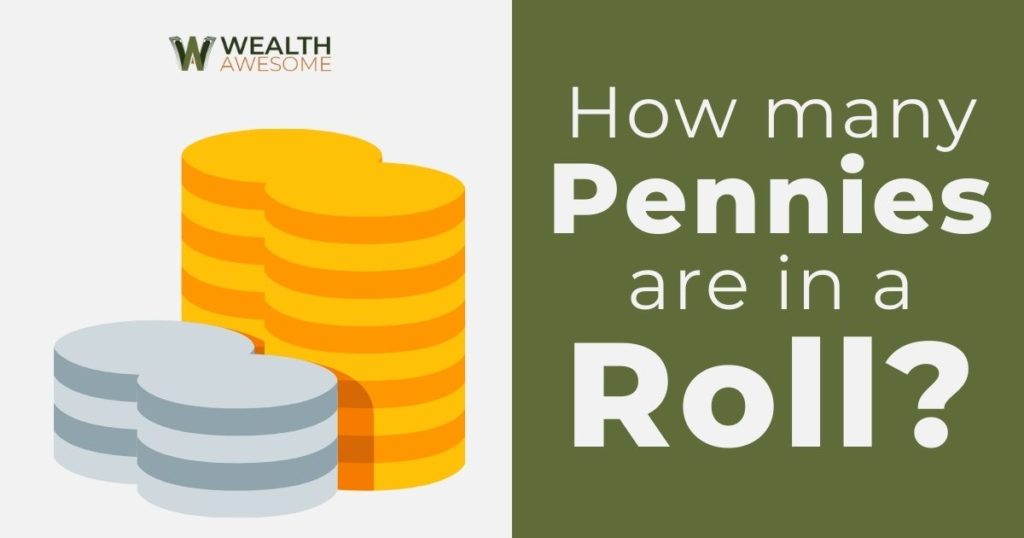
- Coins In A Roll Of Pennies: 50
Once under-appreciated, pennies are some of the most sought-after coins in Canada today.
Since production of new pennies ceased, many of the older pennies have become collector’s items, and can be found on eBay selling for 100x their original price.
Let’s be honest – one cent is not a lot of money. However, pennies are no less important than any other type of Canadian coin. Without pennies, businesses wouldn’t be able to make change for amounts that weren’t denominators of five and ten. Simply put, pennies give consumers an accurate way to pay for that $2.87 coffee.
Sadly (for some, at least), the Royal Canadian Mint stopped producing pennies in 2013. The cost of the metal needed to produce a penny (even after copper was no longer used) became too much to justify the production of pennies. Canadian pennies are still in circulation, but no new pennies are being produced.
What Are Canadian Pennies Made Of?
Throughout the 50s and most of the 70s, Canadian coins were made primarily of copper. Old copper pennies are easy to recognize, as many of them have a slightly green tint due to the natural oxidation of copper as it’s exposed to the elements.
Due to the increasing price of copper, Canadian pennies minted between 2000 and 2012 were made with a content consisting of:
- 98.4% Zinc
- 1.6% Copper plating
2. How Many Nickels Are In A Roll In Canada?
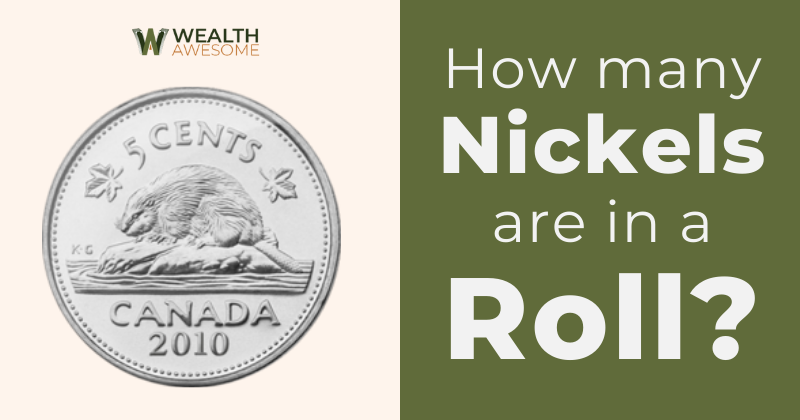
- Coins In A Roll Of Nickels: 40
If you appreciate denominations of five, then you no doubt appreciate the reliable value of a five-cent nickel. Nickels are larger than both dimes and pennies.
Although they’re not used quite as often as quarters and loonies, they’re still an important piece of currency and are commonly used by businesses to provide small amounts of change.
What Are Canadian Nickels Made Of?
The first nickels in Canada were produced in 1858. At this time, they were made from 92.5% silver and 7.5% copper. Today, the metal required to produce a silver nickel far outweighs the value of the five-cent coin itself.
From 1922 to 1942, nickels were made using 99% pure nickel (which is how they got their name). As time went on, the cost of nickel increased and was cut with copper.
Today, all nickels minted after 2000 are made with:
- 94.5% Steel
- 3.5% Copper
- 2% Nickel plating
3. How Many Dimes Are In A Roll In Canada?
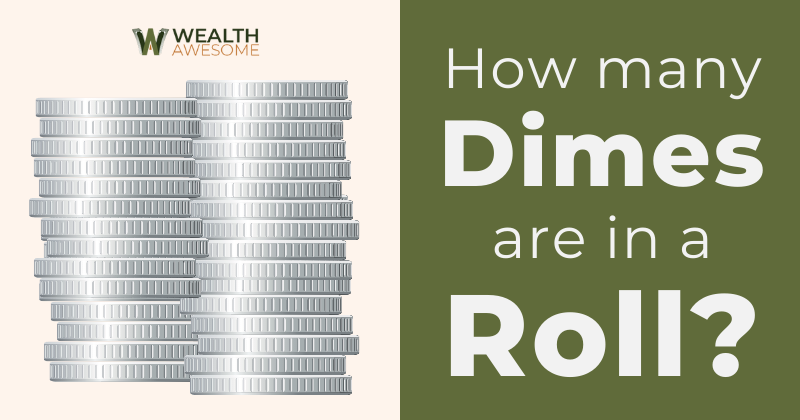
- Coins In A Roll Of Dimes: 50
A roll of dimes contains 50 coins and is worth an even $5.00, making it easy to remember when you take a trip to the bank.
Like nickels, the original Canadian dimes (first minted in 1858) were made primarily with silver and are worth far more than ten cents today. If you happen to find one, it could be worth hundreds of dollars!
What Are Canadian Dimes Made Of?
From 1968 to 2000, dimes were made with the same metallic composition of nickel, and contained 99.9% nickel. From 2000 to present, all Canadian dimes are made with a composition of:
- 92% Steel
- 5.5% Copper
- 2.5% Nickel
4. How Many Quarters Are In A Roll In Canada?
- Coins In A Roll Of Quarters: 40
A roll of Canadian quarters contains 40 coins for a total value of $10. Quarters are probably one of the most-used coins in circulation, due to their higher value.
Personally, I use quarters most often when I’m buying a snack from a vending machine or using a self-service car wash.
What Are Canadian Quarters Made Of?
Up until 1968, all Canadian quarters were made with 50% silver. Given their heavier weight, a pre-1968 quarter is worth far more than its value in silver. Today, however, all Canadian quarters are made up of:
- 94% Steel
- 3.8% Copper
- 2.2% Nickel plating
5. How Many Loonies Are In A Roll In Canada?
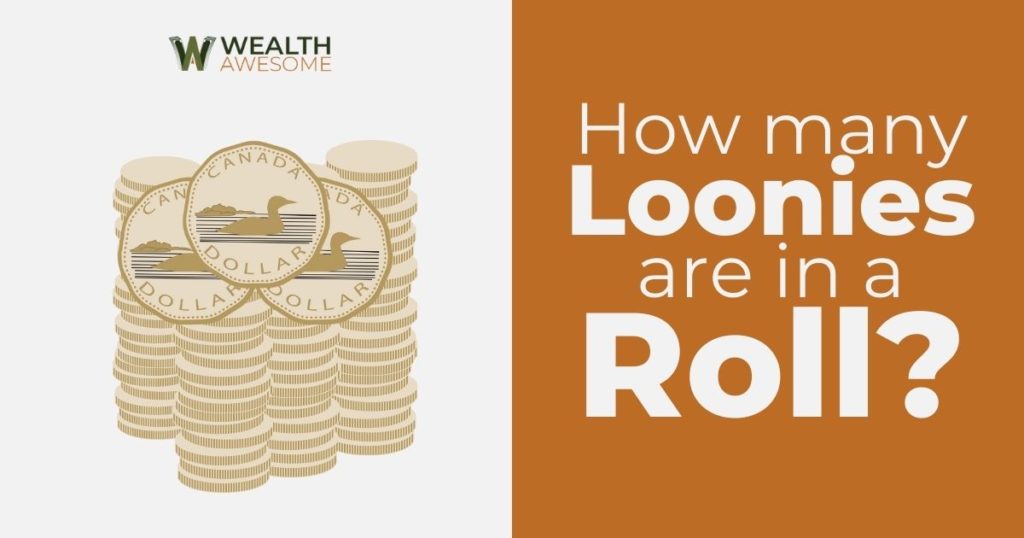
- Coins In A Roll Of Loonies: 25
A roll of loonies contains 25 coins and is valued at $25. Loonies are easily Canadians’ favourite coin, and can be found in the pockets of most people walking down the street.
Thanks to inflation, there aren’t as many items that can be purchased with a single loonie as there once were. However, they’re still used on a daily basis by most Canadians.
Why Is The Canadian Dollar Called A “Loonie”?
If you look on the back of the loonie, you’ll find a loon – a bird that’s a close cousin to the duck. While loons aren’t Canada’s national bird (which is the Canada Jay), they’re one of the more common birds and can be found in almost all provinces and territories.
What Are Loonies Made Of?
Up until 2012, loonies were primarily made of nickel with bronze plating. To account for recent inflation, though, all loonies made after 2012 are made using multi-ply brass-plated steel.
6. How Many Toonies Are In A Roll In Canada?
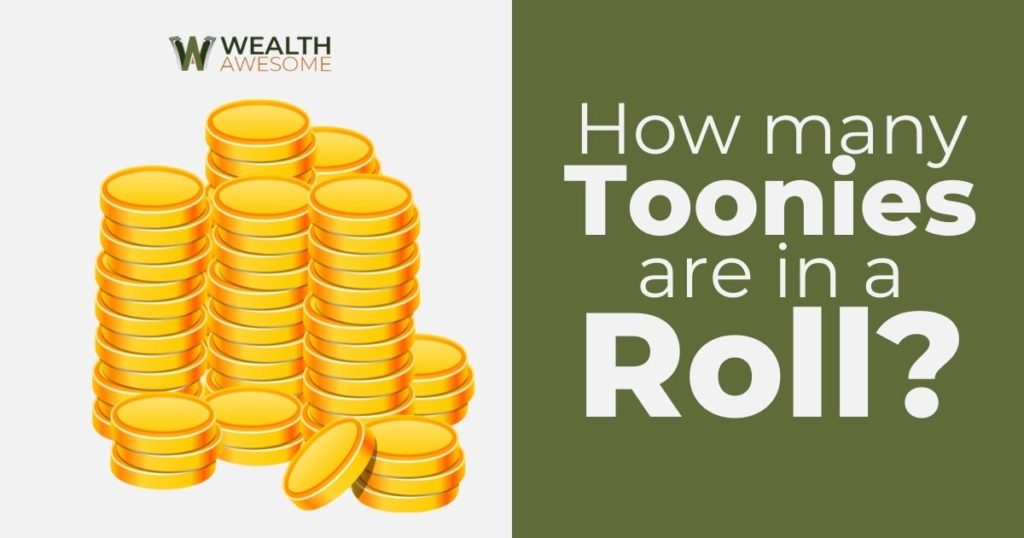
- Coins In A Roll Of Toonies: 25
A roll of the two-dollar toonies contains 25 coins and is valued at $50. The toonie is the newest coin in Canada, and wasn’t introduced until 1996, in an effort to replace the two-dollar bill.
While toonies aren’t quite as commonly used as loonies, they’re still relatively common and are used by businesses and individuals alike.
How Did The “Toonie” Get Its Name?
Loonies are named after the Canadian loon, which is why some foreign visitors often wonder if there’s another Canadian bird called a “toon.” Although this logic is sound, the reality is a bit simpler.
The word “toonie” is just a combination of the words “two” and “loonie,” as in two loonies.
What Are Toonies Made Of?
The original toonies were made using 99% nickel for the outer ring. The inner center consisted of:
- 92% Copper
- 6% Aluminum
- 2% Nickel
Many of these original toonies are still in circulation. Like many other coins, though, the makeup of toonies was changed in 2012. Today, toonies are made using multi-ply nickel-plated steel (for the outer ring) and multi-play brass-plated aluminum-bronze (for the center).
FAQs About Canadian Coins
To wrap things up, here are a few quick answers to some of the most commonly asked questions about Canadian coins.
Are There 50-Cent Coins In Canada?
Yes! The first Canadian 50-cent coin was minted in 1870. These coins are still produced today. However, they’re rather rare and are not commonly used.
Canadian Collectors’ Coins: Where Can You Find Them?
Coins are a big deal in Canada, and many people collect them. Every year, the Royal Canadian Mint produces special-edition collectors’ coins, which can either be purchased directly from the mint or found online through various coin-trading platforms.
Who Manufactures Canadian Coins?
The Royal Canadian Mint manufactures all coins in Canada at its two locations in Ottawa and Winnipeg.
Conclusion
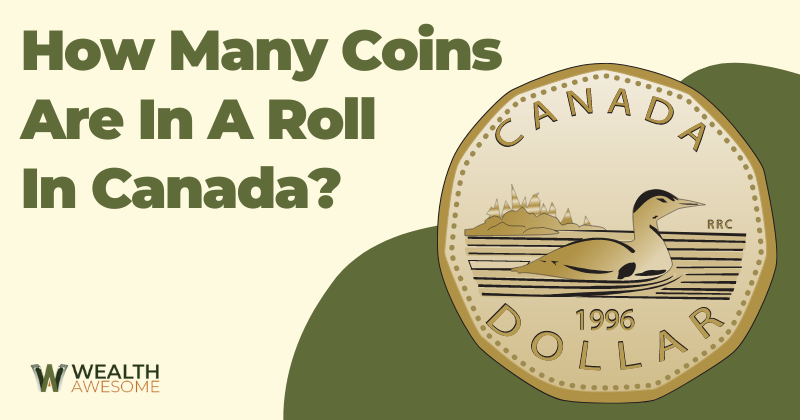
Hopefully, this post was able to teach you a few new things about coins. For the most part, the number of coins in a roll has stayed consistent over the decades.
Knowing exactly how many coins are in a roll will make it much quicker to exchange bills for coins the next time you’re at the bank.
Looking for more everyday banking knowledge? Keep reading to see my step-by-step guide on how to close a bank account in Canada!




